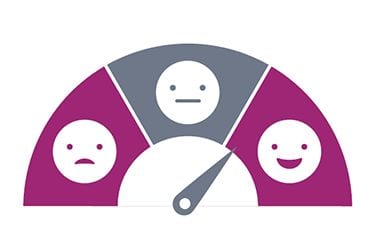SEO AUDIT: OVERLOOKED ISSUES AND QUICK WINS
| By Aaron Noy
Seemingly small site errors can have a big impact on site performance and rankings. Julia Logan identifies five areas affiliates need to check

Onsite SEO audits are a vital part of ongoing website maintenance. You want to make sure your site is functioning properly, that it is fast, navigable and indexable. But some smaller issues can get overlooked which, left unchecked, could cost your site performance and even rankings. A few of them are listed here:
1. Google uses ‘hreflang attributes’ to match the user’s language preference to the corresponding version of your pages. Sites with more than one language or that target more than one country should use the hreflang attribute to indicate different versions of a page. Sometimes, though, that hreflang tag points at a nonexistent URL. This could be due to changes in the site architecture over time or even a simple typo. Sometimes when a site has discontinued a version in a certain language the old hreflang tags are forgotten and never removed. While hreflang is considered a signal rather than a directive, incorrect hreflang attributes can be confusing to search engines and cause your site to not rank in the locations you would like them to. You can identify incorrect hreflang attributes by running a site crawl in ScreamingFrog, which has a report that specifically covers hreflang attributes. You can also check for known hreflang errors using an ‘international targeting’ report in Google Search console under Legacy Tools and Reports -> International Targeting.
2. While we’re on the topic of hreflang attributes, pay attention to the language version you are using on your site and in your hreflang attributes. If the site targets the UK the correct version of hreflang should be “en-GB” and not “en-US”.
3. Another issue easy to miss is multiple occurrences of hreflang attributes or meta tags on a page. It’s even worse if these multiple occurrences contradict each other. These may be caused by the CMS you use for your site or by various plugins each adding their own tags, controllable via different interfaces hence easy to overlook or set to different values. Removing these multiple entries may not be easy and could require some of the plugins to be disabled. The more plugins with overlapping functionality you use on a site, the higher the chance they will try to insert multiple elements into your site’s pages. Make sure you know what exactly each plugin influences and disable unwanted functionality. Most meta tags should appear only once in the section of your page. Only one set of hreflang attributes covering all the language versions you use on your site should be used and it is also placed only in the section of the page. It is possible to detect multiple meta tags or hreflang attributes occurrences via ScreamingFrog or by running a site audit in Sistrix Optimiser where multiple occurrences of critical elements on the site will be highlighted as errors.
4. Some plugins can be too ‘helpful’ and try to insert tags unnecessary for your site without you knowing. One such example is using rel=“prev” and rel=“next” attributes on pages where there is no pagination. The rel=“next” and rel=“prev” link attributes are used to indicate the relations between a sequence of pages to search engines, hence if there is only one page without any others following it in sequence there is no need for these attributes. Earlier this year Google announced it is no longer using these attributes, but they may still be useful for other reasons such as accessibility or link discovery. Other search engines such as Bing still use rel=“prev”/“next” attributes. Using rel=“prev”/“next” incorrectly can therefore get ignored but it can also be harmful in some cases, for example if you have no pagination on your site but have rel=“next” leading to an exact duplicate copy of the original page (i.e. where the second page does not exist but is just an altered form of the original URL successfully resolving due to a CMS bug). The nature of the bug is such that if, for example, ‘https:// www.domain.com/page/2/’ is added to any page on the site, the resulting URL will resolve to the original page’s content, potentially creating a duplicate of ‘https://www.domain.com/’. Having a canonical on each page helps, but why lead the search engines to discover a nonexistent duplicate URL? Also, some WordPress themes set rel=“prev”/“next” for unrelated separate blog posts following each other, an incorrect use of the pagination attributes caused by misunderstanding their nature and purpose. Detecting these errors is possible via most SEO audit tools, including ScreamingFrog which has a separate report for all pagination related issues.
5. Using multiple files for the same image might be the least obvious thing to look for and most tools I am aware of do not have any means of detecting this issue. However, this issue is directly related to your site’s performance and page speed. If every time the same image is required a new file has to be requested, your site cannot benefit from caching. The only tool I am aware of that successfully detects this issue is Sistrix Optimiser. It will also provide you with all the file names for duplicate images, as well as the pages using them, so that you know where exactly the issue needs to be fixed.
While these smaller issues may not be top of the list when people think of good onsite SEO, eliminating them can give your site some quick wins in terms of performance and indexing. The next time you run a site audit, do not overlook them.
